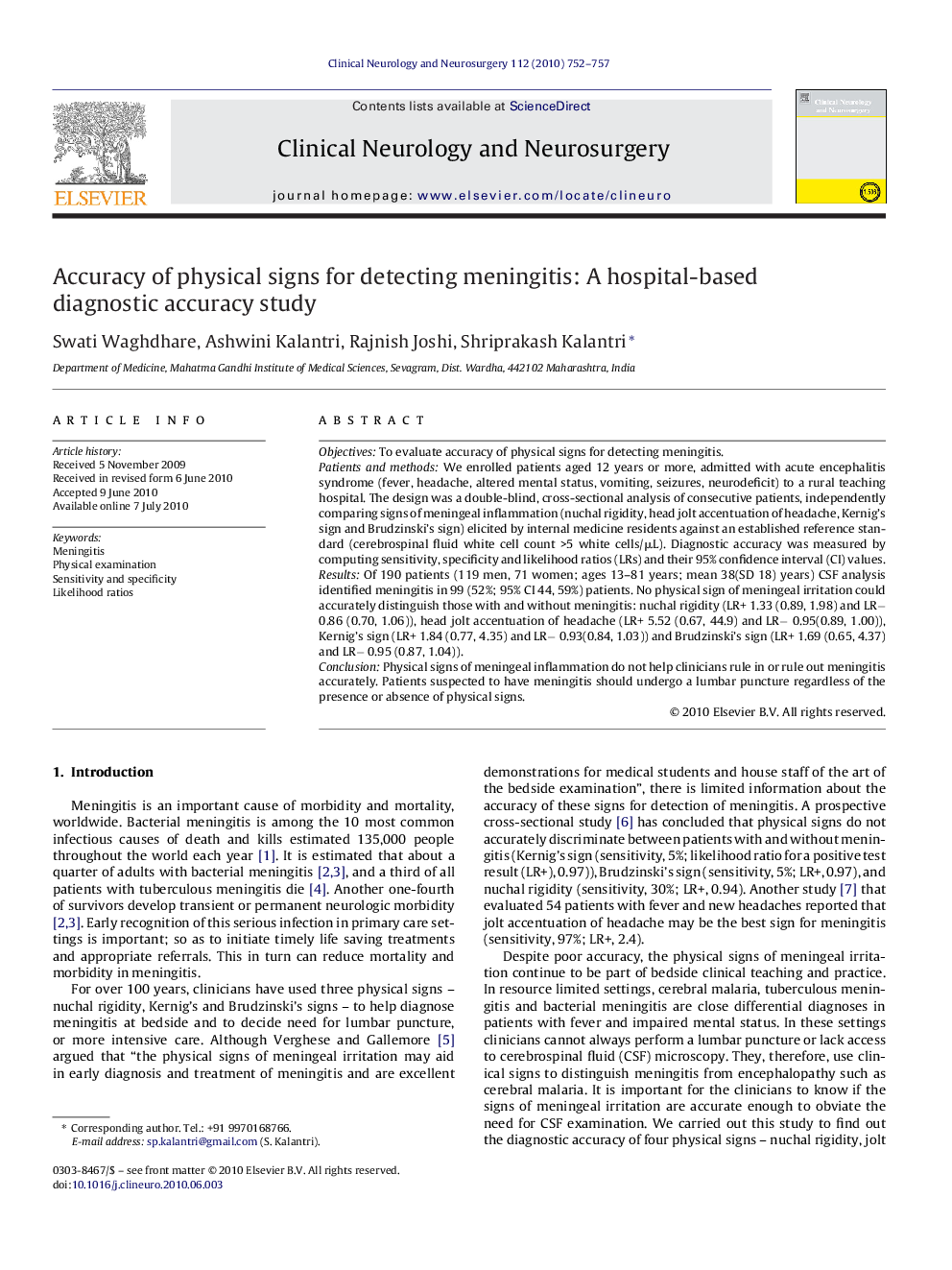| Article ID | Journal | Published Year | Pages | File Type |
|---|---|---|---|---|
| 3041210 | Clinical Neurology and Neurosurgery | 2010 | 6 Pages |
ObjectivesTo evaluate accuracy of physical signs for detecting meningitis.Patients and methodsWe enrolled patients aged 12 years or more, admitted with acute encephalitis syndrome (fever, headache, altered mental status, vomiting, seizures, neurodeficit) to a rural teaching hospital. The design was a double-blind, cross-sectional analysis of consecutive patients, independently comparing signs of meningeal inflammation (nuchal rigidity, head jolt accentuation of headache, Kernig's sign and Brudzinski's sign) elicited by internal medicine residents against an established reference standard (cerebrospinal fluid white cell count >5 white cells/μL). Diagnostic accuracy was measured by computing sensitivity, specificity and likelihood ratios (LRs) and their 95% confidence interval (CI) values.ResultsOf 190 patients (119 men, 71 women; ages 13–81 years; mean 38(SD 18) years) CSF analysis identified meningitis in 99 (52%; 95% CI 44, 59%) patients. No physical sign of meningeal irritation could accurately distinguish those with and without meningitis: nuchal rigidity (LR+ 1.33 (0.89, 1.98) and LR− 0.86 (0.70, 1.06)), head jolt accentuation of headache (LR+ 5.52 (0.67, 44.9) and LR− 0.95(0.89, 1.00)), Kernig's sign (LR+ 1.84 (0.77, 4.35) and LR− 0.93(0.84, 1.03)) and Brudzinski's sign (LR+ 1.69 (0.65, 4.37) and LR− 0.95 (0.87, 1.04)).ConclusionPhysical signs of meningeal inflammation do not help clinicians rule in or rule out meningitis accurately. Patients suspected to have meningitis should undergo a lumbar puncture regardless of the presence or absence of physical signs.
